Did you get some strawberries in 2020? We hope so! The season is so short, and we know it takes you some effort to get to our farm when the strawberries are ripe. Many people ask me why we close early some days, and how long it takes to grow strawberries. If you are one of the curious ones, read on:)
Fifteen Months
A strawberry crop takes 15 months to come to full ripeness from planting to harvest, and it can be damaged or lost at any time during that 15 months from severe weather events. We have no crop insurance coverage on our strawberries. All we can do is take care of the soil and the plants, and pray.
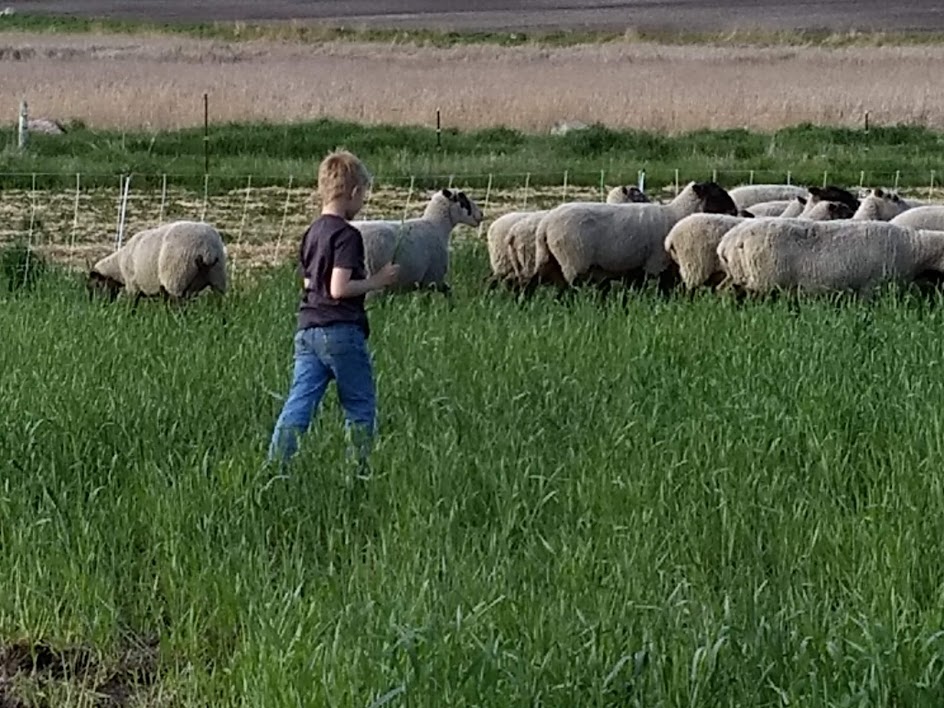
Soil Care
Before planting strawberries, we let the soil rest for two years. During that time, we plant covercrops and graze the land with sheep. In this photo, the sheep are grazing annual rye. The rye roots go down deep, injecting air and nutrients into the soil. As the sheep graze, their hooves are activating microbiological activity in the rhizosphere, which is the area around the roots of the plants. In addition, as the sheep tear off the rye tops, the rye is encouraged to push its’ roots down deeper, increasing and enriching the rhizosphere.
As soon as the sheep have grazed the area down to a few centimeters, Dan will move them to a new crop block and allow this rye to grow back. Depending on how much rain we get, this area will be grazed 2-3 times, then get plowed under and a new type of cover crop, either oats or sorghum/sudan will be planted. The process will repeat. The sheep are getting fed top quality food, and our soil is naturally stimulated and enriched.
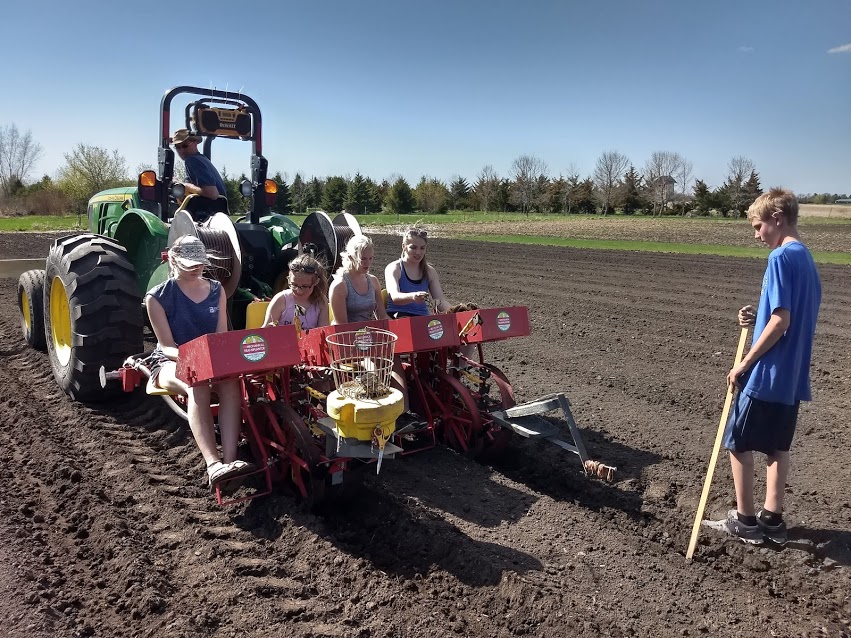
Planting
After two summers of cover crops, we till the soil to prepare it for planting. We can fit four people on our planting machine. The plants are bare root. We place them into a wheel that rotates down and places them into the soil, along with a line of drip irrigation tape. We have two people follow behind to make sure the roots are buried deep in our good soil. We plant about three acres of baby plants each spring.
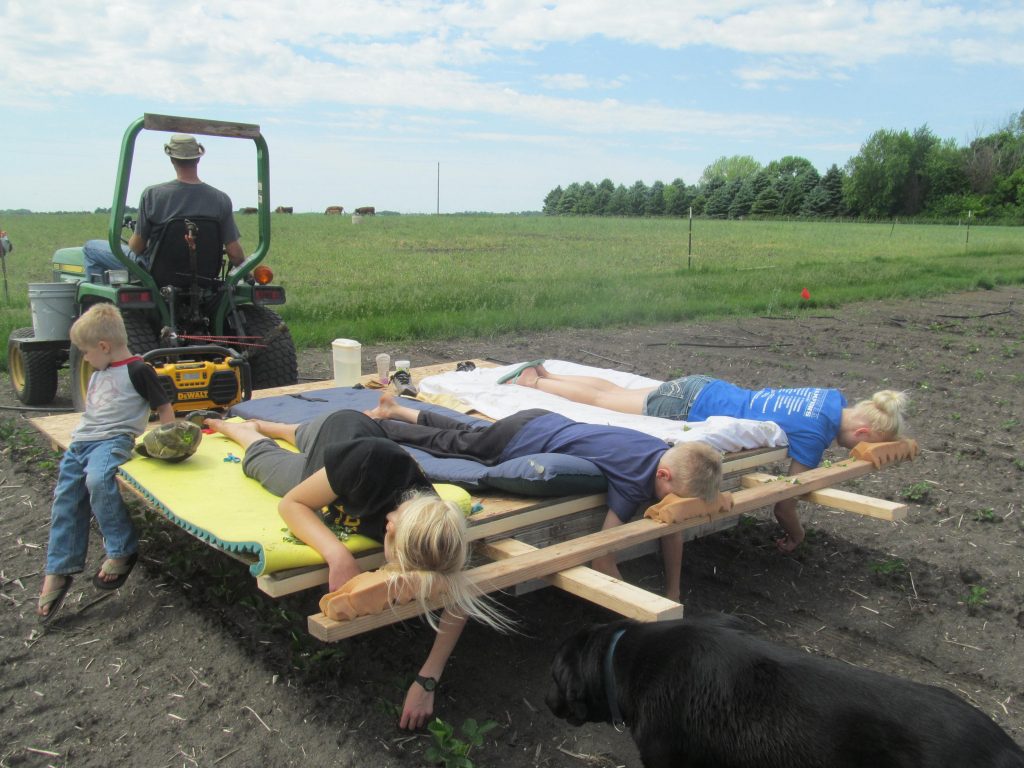
Baby Plant Care
A few weeks after planting, we go through the field cutting off all the blossoms. This encourages the plants to leaf out, instead of using up energy producing strawberries. We take care of these plants all summer, making sure they have enough water and nutrients to grow strong and healthy. We weed them by hand and hoe every week, so that the weeds aren’t stealing their water and nutrients. They need an inch of water a week.
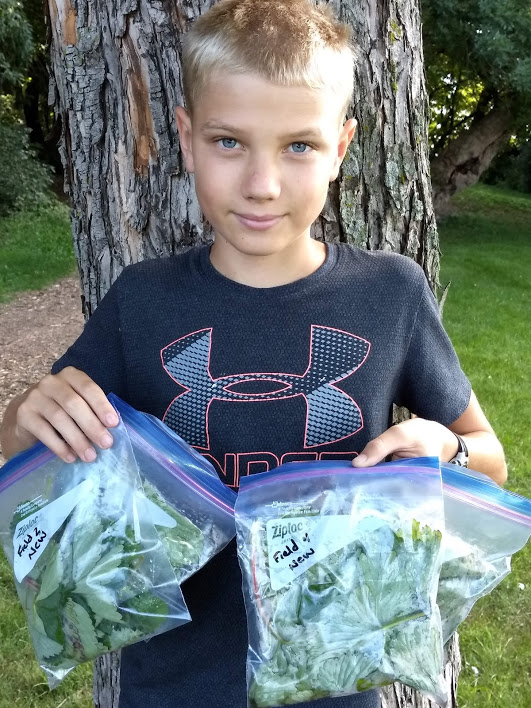
Soil and Sap Tests
These baby strawberry plants need a lot of nutrients. We do a complete soil health analysis on each of our crop blocks once a year to measure how pH, soil organic content and nutrient levels are impacted by our covercrops and sheep.
More importantly, we take sap tests four times per summer in each strawberry planting block. This is cutting edge technology that provides results far more specific than leaf tests. A leaf test only provides a snapshot of the nutrients currently inside a plant. A sap test, because it uses the difference between young and old leaves, can predict what nutrients will be lacking in the next week.
We collect both young and old leaves and ship them on ice all the way to the Netherlands, where the sap inside the veins of the leaves is analyzed. The results are emailed to us, and Dan immediately heads out to the field to apply whatever nutrients are lacking, such as boron, calcium, molybdenum or nitrogen so that our plants remain at optimum health.
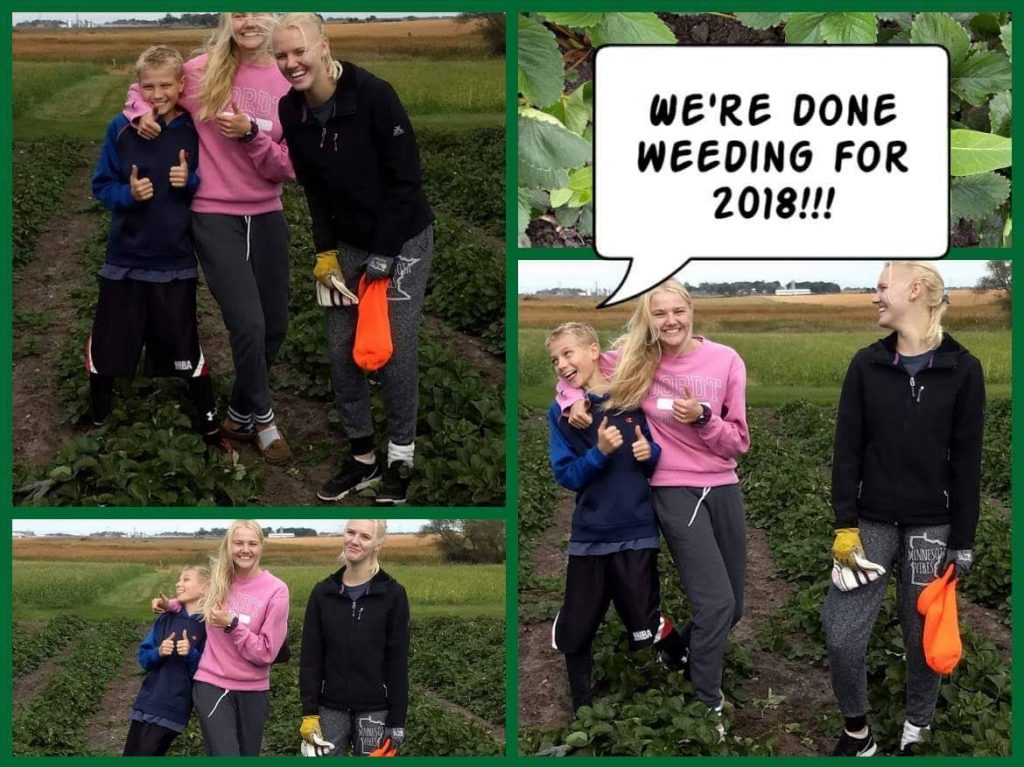
WeedingAll the fields need hand weeding once a week from May to November. We’ve tried all sorts of tricks to keep the kids motivated to weed, from candy, to cash, to computer time, to “must finish this field before we leave on vacation.” By the end of the summer, we are pretty sick of weeding! This past year, we did hire some extra help, but for most of the past 20 years, my kids and I have managed it all. We seriously cheer in October when it freezes and the weeds finally die off.
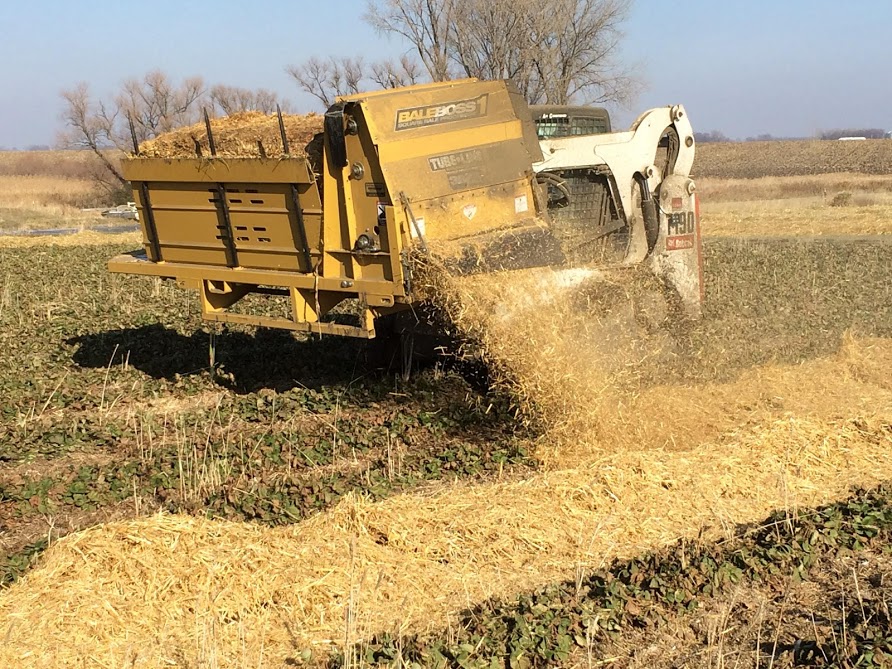
Fall Blanket
In November, if temperatures are right, the plants go dormant.. They already have their buds set for the following year, which means that our strawberry crop is already determined, and must be protected from winter-kill. We cover the plants with 4-6 inches of straw, using an attachment to a skid loader called a Bale Boss. It chops the straw up and spreads it over the plants to protect them from the harsh Minnesota winter.
This is tricky to monitor and complete. We can’t cover them before full plant dormancy, but if they aren’t covered before a deep freeze, they will die. Covering takes Dan about 50 hours of work, and sometimes he only has a few days of the correct weather conditions to get it done. Lots of prayer and long days and nights under a cold November moon accompany this task.
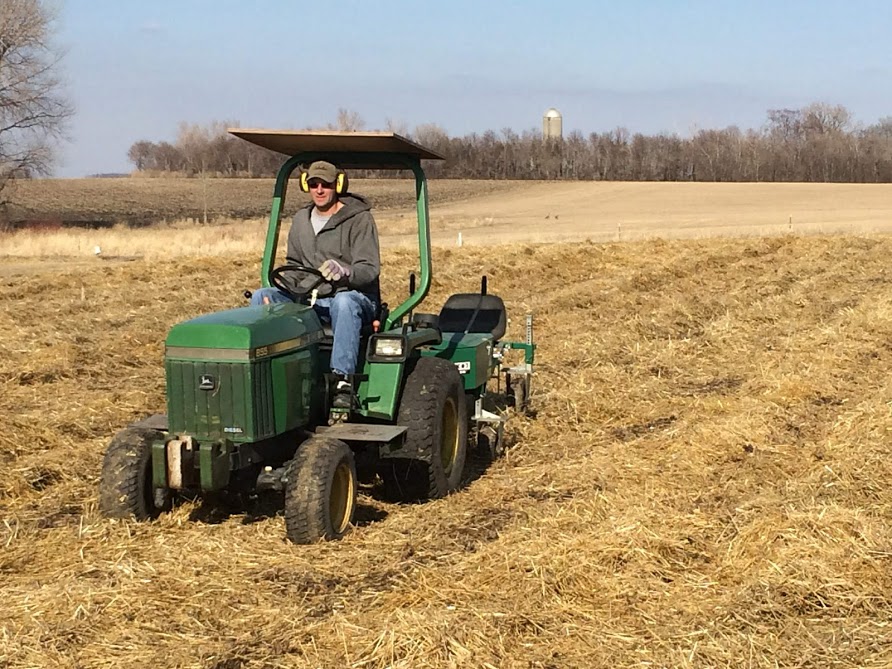
Uncovering in SpringIn the spring, when soil temperatures exceed 45 degrees F, Dan uses an Eco-Weeder attachment to swish the straw off the plants. Then, we pray that we don’t get any late frosts. We can protect from frosts by watering our plants all night long until they have a coating of ice on them, but it is extremely labor intensive, and uses up our water reserves.
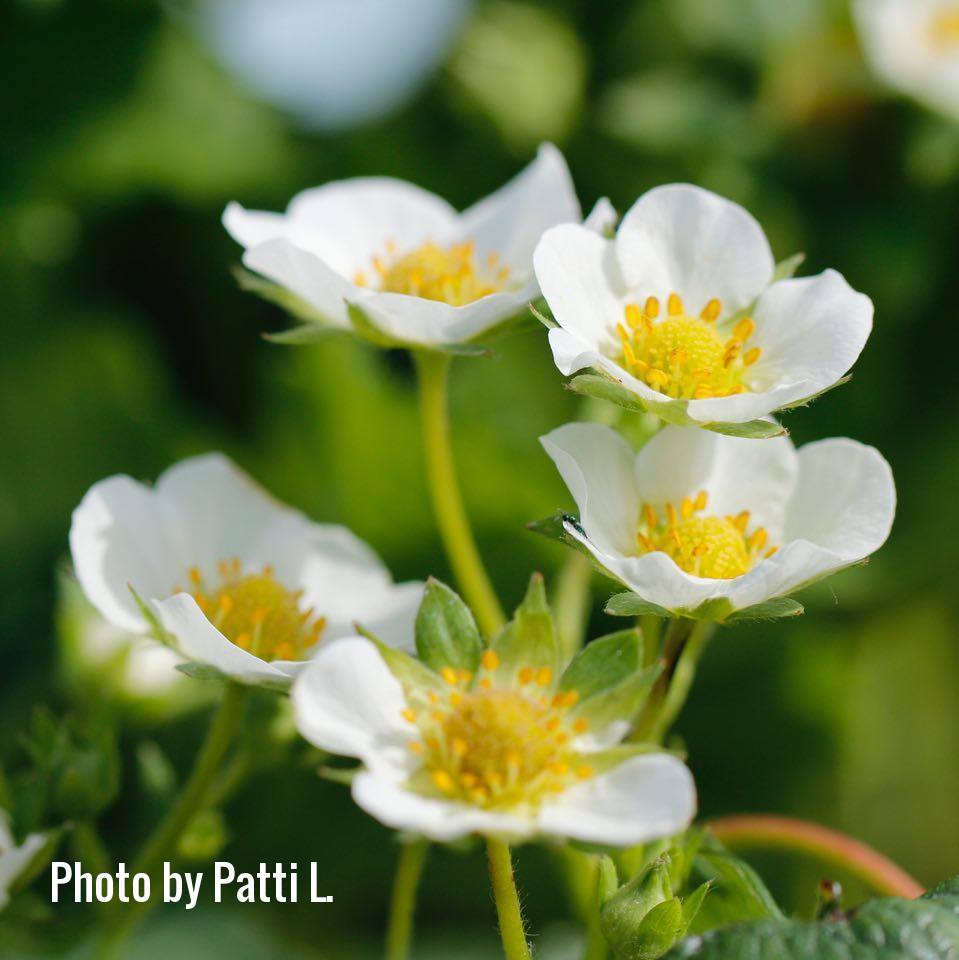
Blossoming Strawberry blossoms show up in late May and early June, and we pray for good pollinating weather. We walk the fields daily to check on the bees and other pollinating insects, and to see how the flowers are developing. It takes about a month for the blossoms to grow into ripe strawberries. During that month, we keep the plants watered and weeded, and get our yard cleaned up to prepare for our customers!
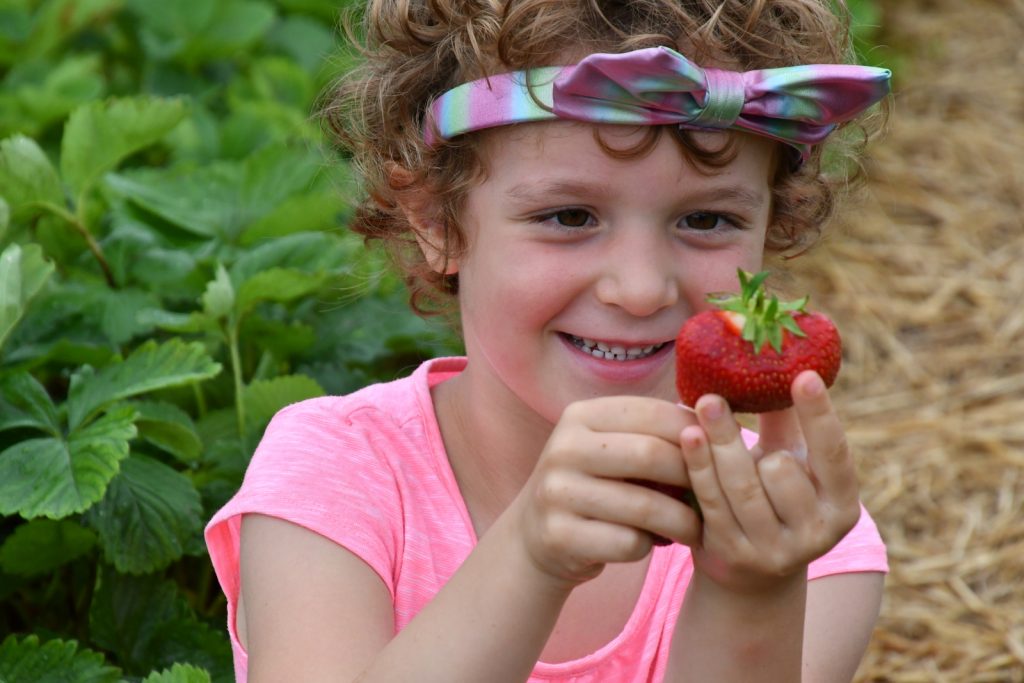
Harvest
The strawberry harvest lasts only 2-3 weeks, and involves nearly ten thousand people! I’m so grateful to everyone who watches our website and Facebook so that they know when we have ripe strawberries, and when all the rows have been picked and need a day to ripen.
Just for fun, picture a farmer you know in a tractor harvesting corn, and imagine him trying to schedule ten thousand people to hand-harvest his corn:) This year, we had a good harvest, and enough people came at the right times to make sure all the strawberries were harvested. Thank-you!!!
Renovation
After harvest, we use a lawn mower to to mow off the top vines. This encourages the plants to send out new vines for next year’s strawberries. We spend the summer weeding and watering them, and then put them to bed for the winter again. Hopefully, we can keep the plants healthy enough to produce for us 2-3 summers. After that, the plants will get tilled into the soil, and we’ll give the land two years of cover crops and sheep grazing before planting it with strawberries again.


